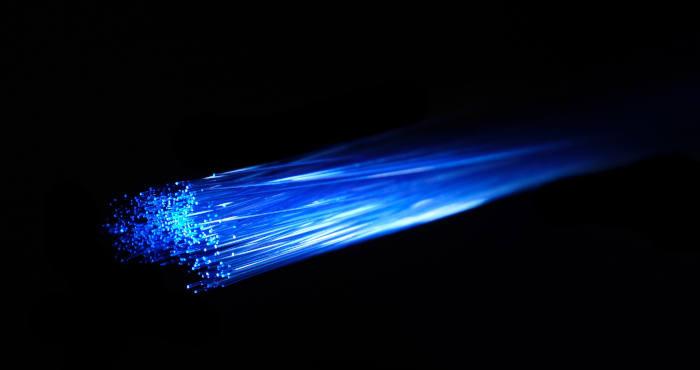Light Blue Fibre (LBF) is a new network that will enable connectivity to the city’s globally significant science and research parks and pave the way for significant high performance computing (HPC) and artificial intelligence (AI) collaborations across the UK Innovation Corridor and Europe.
The webinar included a lively debate along with a Q&A section at the end with a range of questions on utilisation, performance and network coverage. The full recording of the session can be found here and a rundown of the key questions and answers is included below.
If you are interested in finding out more about the LBF service please contact Andy Harris andy.harris@eunetworks.com
LBF Q&A
Which Cambridge campuses is the service available on? And is there a timeframe to add additional science campuses?
Jon Holgate, Light Blue Fibre (LBF): LBF have a presence at Babraham Institute, Wellcome Sanger Institute, Cambridge Biomedical Campus (that’s Addenbrooke’s to any one local), the Railway Station/ Hills Road area, the City Centre and all University campuses. LBF have ambitions to extend to other near-net and off-net locations, and timeframes for these would be demand-led. We are happy to discuss this in more detail if organisations want to get in touch.
Is there a direct fibre route to Norwich from Cambridge?
Toby Williams, euNetworks: euNetworks own fibre towards Lowestoft but would need to lease fibre from third parties to create an end-to-end service to Norwich. We’d be happy to talk through your requirements and look at the best options to create that link.
What is the best way to understand more detail on the routes and diversity across the network?
Jon Holgate, Light Blue Fibre: LBF have several local fibre rings, which can offer diverse connections.
Andy Harris, euNetworks: We are able to discuss your specific requirements and share KMZ/ Logical diagrams for the solution.
Can you say a little more about what speeds we're talking about?
Toby Williams, euNetworks: euNetworks offers a range of products with different speeds. Typically cloud, Ethernet and IP based Internet is offered from 100Mbps up to 10Gbps. Wavelengths services are offered from 10Gbps to nx100Gbps, then we offer Spectrum and Fibre services to deliver terabits of bandwidth. We also work with partners to offer value-added services and provide access to affordable bandwidth services.
How do you coordinate with channel partners?
Andy Harris, euNetworks: We either work on single opportunities at a time or create a longer-term framework contract for services. It depends on the demand and the partner.
What vendors do you use to power your network?
Toby Williams, euNetworks: euNetworks uses a range of vendors including Adva, Ciena, Infinera and Juniper.
Can you provide layer 1 encrypted services?
Toby Williams, euNetworks: Yes. Typically, we would provide dedicated DWDM hardware to be placed in a customer’s own racks and allow the customer to manage the keys.
How is 5G impacting your business?
Andy Harris, euNetworks: Both 5G and Edge are still in their infancy today although there are several use cases in discussion, including in the Cambridge area. Ultimately 5G will create more demand for fibre services and connectivity to data centres.
There are a lot of start-up companies on Cambridge science parks. Are the services offered by Kao Data, LBF and euNetworks financially viable for these start-ups?
Andy Harris, euNetworks: One of the originating reasons for opening LBF to a wider audience was to support the growth of start-ups and SMEs. They will be able to grow with lower bandwidths and work with our partners to offer value-added services and have access to affordable bandwidths.
Which applications are the most CPU hungry?
Spencer Lamb, Kao Data: A whole plethora from data mining, data analytics, film and video rendering to bioinformatics applications such as genomic sequencing and computational biology. Plus, AI applications like deep neural network development, machine vision, natural language translation, speech and image recognition can push CPU processing power to the limits where GPUs are needed to accelerate workloads.
Can you say more about what connectivity there is via euNetworks or Kao Data to quickly access hyperscale cloud services?
Spencer Lamb, Kao Data: Kao Data is a Megaport enabled data centre offering rapid access and on-ramps directly into all the main hyperscale cloud providers. We can therefore offer the perfect hybrid HPC environment between advanced colo and elastic cloud.
Toby Williams, euNetworks: Working with Kao Data, euNetworks constructed a full fibre ring from their data centre back to the euNetworks London-Slough metro in 2019. In 2021 we will extend the network to nearby DC regions in Welwyn Garden City and Hemel Hempstead.
euNetworks provides bandwidth infrastructure to the hyperscale sector and as a result, we are directly connected to all major hyperscale cloud data centres in the UK and Europe.
From Kao Data we offer connectivity to these DCs, including direct access to the Cloud platforms such as Azure, AWS, Google Cloud, Oracle, IBM Cloud, Equinix Cloud Exchange and Alibaba Cloud.
You can find more information on that here: https://eunetworks.com/services/solutions/cloud-connect/. And you can explore and search our network here: https://map.eunetworks.com/.
